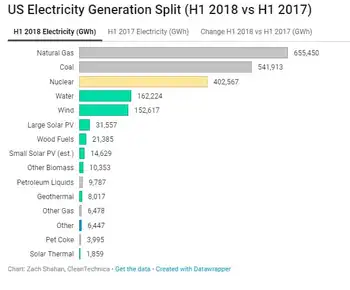German tariff cuts to spark solar bloodbath
FRANKFURT, GERMANY - A potential deep cut in feed-in tariffs in Germany will hit solar companies around the world and increases pressure on large players to reduce exposure to the world's largest photovoltaic market.
Analysts say that lower prices could result in a shakeout in the industry that drives higher cost players out of business and dissuades new entrants.
Shares in solar firms plummeted after a Reuters report that the German government plans to chop feed-in tariffs — prices utilities pay generators of renewable energy — as early as April, much more deeply and sooner than the market expected.
Analysts agree that the plans, which envisage a one-off cut of 16-17 percent on top of the 10 percent already set out in the German Renewable Act, will deal a major blow to the sector, which the German government thinks is overly subsidized now.
Most of the industry's leaders — such as Yingli and Suntech from China, Q-Cells and SMA Solar from Germany and U.S. groups First Solar and SunPower — have big sales exposure to Germany.
"This is negative for the whole sector as the mentioned cuts are not only higher than the 10 percent expected, but in particular would also be implemented one quarter earlier," UniCredit analyst Michael Tappeiner wrote to clients.
"In addition, the subsidy cuts would initially reduce investment returns in the ground-mounted solar park segment to unattractive levels," he added.
The solar industry depends on generous feed-in tariffs as long as grid parity — the point at which energy from solar modules costs the same as that won from fossil fuels — has not been reached.
Large utilities must pay producers of solar power the feed-in tariffs, which have gradually fallen from 57 euro cents per kw in 2004 to 39 cents this year. The utilities then pass the higher costs to consumers.
"The biggest sufferers in our universe would be Q-Cells, Solon, SolarWorld, and SMA Solar," said DZ Bank analyst Sven Kuerten.
Germany's biggest solar companies are highly dependent on the domestic market. Q-Cells made 56 percent of its sales in the first nine months of 2009 in Germany, SolarWorld 67 percent and SMA Solar more than 70 percent.
Analysts said foreigners would suffer too.
"With a possibly disproportionate decline in demand... we cannot exclude effects on Chinese companies as well," LBBW analysts said, calling the report "devastating news."
Germany accounts for about half of global panel sales at China's Yingli and more than half at Suntech. U.S.-based First Solar, which is set to become the world's biggest maker of solar cells and has a manufacturing site in Germany, made 60 percent to 70 percent of its sales here last year.
"For the big players, there is no real way around Germany, to be honest," said SES Research analyst Karsten von Blumenthal.
"Sure, companies try to enter markets such as France, Italy, Spain and the Czech Republic. But we're talking about markets that are way smaller than Germany," he added.
European solar industry association EPIA expects that combined installation volume in those four countries will total up to 1.96 gigawatts in 2010, or 18 percent of estimated global 2010 output, compared with 2.8 gigawatts for Germany.
Blumenthal said it was doubtful whether other European countries could offset a large market slump in Germany.
Europe excluding Germany accounted for 32 percent of Q-Cells sales in the first nine months of 2009. The respective share for SolarWorld, whose chief executive, Frank Asbeck, described the planned cuts as unacceptable, was 19 percent.
"The problem for some of the German producers such as the country's No.1 SolarWorld as well as Q-Cells is that they are quite pricey and have high fixed costs," said an analyst who declined to be named.
Pricing could be decisive when it comes to snapping up orders in Germany, even though the overall market is likely to decline if a significant cut in tariffs materializes.
"The flip side to that is for the Chinese such a large cut means they'll have significant advantage in terms of pricing," said CLSA analyst Charles Yonts.
Chinese manufacturers produce at much lower prices than German peers and analysts have pointed out that they have less difficulty in securing credit lines from domestic banks.
Any significant one-off cuts, however, would have a positive effect in the short term as customers rush orders to benefit from tariffs before they fall even more.
"The steeper the digression, the more front-half loaded the year's installations will be as people take advantage of the higher feed-in tariff," said John Hardy, analyst at Broadpoint AmTech.
Related News

U.S. power companies face supply-chain crisis this summer
WASHINGTON - U.S. power companies are facing supply crunches that may hamper their ability to keep the lights on as the nation heads into the heat of summer and the peak hurricane season.
Extreme weather events such as storms, wildfires and drought are becoming more common in the United States. Consumer power use is expected to hit all-time highs this summer, which could strain electric grids at a time when federal agencies are warning the weather could pose reliability issues.
Utilities are warning of supply constraints for equipment, which could hamper efforts to restore power during outages. They are also having a…




